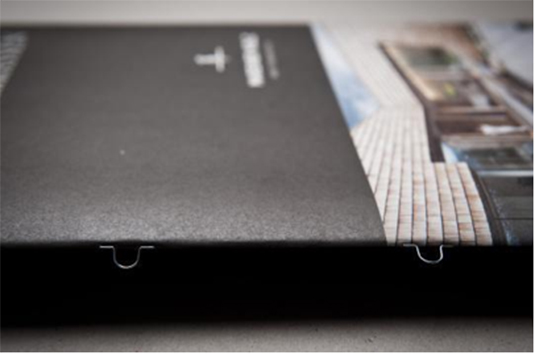How to choose the right paper for your brochure
When you're creating an online advertising campaign you need to consider your target market, your brand image and where you should advertise. The final point is almost the most important: if your advertising appears in the wrong place, your whole campaign and even your brand is likely to suffer.
Facebook had to reconsider where it placed its paid adverts back in 2013 following BSkyB and Marks and Spencer suspending massive contracts. As the marketing channels reflected badly on the brand, Facebook was in a position where it could have lost a lot of revenue.
For a print campaign, you have all these considerations, plus a factor unique to print: paper.

When placing an order with a brochure printing company, they will need to know details about the desired paper quality before they can produce your product. The paper you chose for your brochure can subliminally impact your brand image as much as a poorly thought out campaign, so it's important to make the right decisions. There are two main things to consider before looking further into brochure printing, both which will affect how your brand comes across.
01. Paper density
Paper density refers to the thickness of the paper and is measured in GSM (grams per square metre). A higher GSM equates to a thicker paper which may give a more professional look to your campaigns, but it won't be suitable for every task.
There are no hard and fast rules for paper density, but some types will be more obviously suitable than others.
- 35-55 GSM is typically used for newspapers. The paper is thin and so effective for lots of pages which are low cost and don't need to last long.
- 90 GSM is a typical paper for inner magazine pages.
- 130-170 GSM is a standard weight for a good quality poster you would expect to last for a while.
- 170-300 GSM would be suitable for most corporate brochure printing. You might need to compromise GSM slightly if you have a large number of pages to ensure the brochure lays flat and is not excessively bulky
- 350-400 GSM is thin card, so probably what your business cards are made from. If you chose too low a GSM for your business cards they will be flimsy and may give the wrong impression of your business.
02. Finishes
After you've chosen a paper thickness you can consider which finish would be most appropriate for your brochure.
Daily design news, reviews, how-tos and more, as picked by the editors.
Coated paper is treated to give it a glossy or matte finish. A product on coated paper (whether it's matte or glossy) will end up looking more expensive.
Posters and photographs can be printed on paper which is only coated on one side.
Untreated paper has an unreflective surface suitable for everyday printing. There are several types, each with unique qualities which may make it more or less appropriate for specific tasks.

If you're a charity it would be inappropriate to produce brochures which explain your campaigns and call for donations to be coated 250 GSM paper because it will give the wrong impression. Equally a company which is attempting to give a luxurious feel to their marketing might benefit from coated paper brochures.
While glossy coated paper tends to look best for brochures, it is more important that the appearance of your product fits with your brand image.
What's next?
After you've decided on paper weight and finish for your brochure printing, there are other considerations to be made about the design of the brochure itself. Follow our handy guide to brochure design to make sure you get all design considerations just right.
Related articles:
- Brochure design: 11 inspiring examples
- Illustrator tutorials: amazing ideas to try today!
- The ultimate guide to designing the best logos
